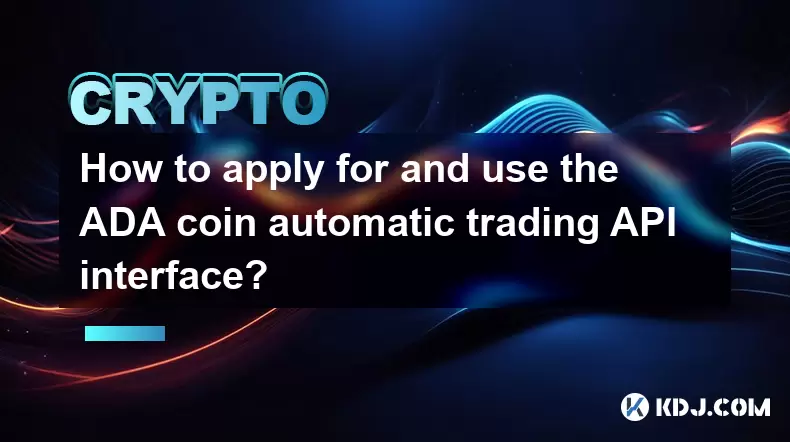-
 Bitcoin
Bitcoin $119600
0.45% -
 Ethereum
Ethereum $4671
8.16% -
 XRP
XRP $3.250
2.78% -
 Tether USDt
Tether USDt $0.9999
0.01% -
 BNB
BNB $838.0
3.17% -
 Solana
Solana $198.5
12.77% -
 USDC
USDC $0.9997
-0.01% -
 Dogecoin
Dogecoin $0.2396
6.18% -
 TRON
TRON $0.3547
2.21% -
 Cardano
Cardano $0.8583
9.20% -
 Chainlink
Chainlink $24.42
13.29% -
 Hyperliquid
Hyperliquid $44.08
1.42% -
 Stellar
Stellar $0.4492
2.37% -
 Sui
Sui $3.915
6.09% -
 Bitcoin Cash
Bitcoin Cash $612.9
3.02% -
 Hedera
Hedera $0.2627
5.34% -
 Ethena USDe
Ethena USDe $1.000
-0.03% -
 Avalanche
Avalanche $24.94
7.83% -
 Litecoin
Litecoin $132.6
10.48% -
 Toncoin
Toncoin $3.439
1.39% -
 UNUS SED LEO
UNUS SED LEO $9.212
2.34% -
 Shiba Inu
Shiba Inu $0.00001371
4.89% -
 Uniswap
Uniswap $11.54
1.13% -
 Polkadot
Polkadot $4.211
7.67% -
 Dai
Dai $0.9998
-0.03% -
 Cronos
Cronos $0.1649
-1.62% -
 Ethena
Ethena $0.7975
-1.46% -
 Pepe
Pepe $0.00001235
9.15% -
 Bitget Token
Bitget Token $4.445
0.46% -
 Aave
Aave $323.7
8.18%
How to apply for and use the ADA coin automatic trading API interface?
To automate ADA trading, choose a reliable exchange like Binance or Kraken, apply for an API key, and set up a trading bot, ensuring thorough testing before going live.
May 19, 2025 at 06:35 pm

Introduction to ADA Coin and Automatic Trading
ADA, the native cryptocurrency of the Cardano blockchain, has gained significant attention in the cryptocurrency market. For traders looking to automate their trading strategies, using an automatic trading API interface can be highly beneficial. This article will guide you through the process of applying for and using the ADA coin automatic trading API interface, ensuring you understand each step thoroughly.
Choosing a Reliable Exchange
Before you can apply for an API interface, you need to select a reliable cryptocurrency exchange that supports ADA trading and offers API access. Some popular exchanges that support ADA and provide API services include Binance, Kraken, and Coinbase Pro. Each exchange has its own set of features and API capabilities, so it's important to choose one that aligns with your trading needs.
- Visit the exchange's website and sign up for an account if you haven't already.
- Complete the necessary verification processes to ensure your account is fully operational.
- Navigate to the API section of the exchange, usually found under settings or account management.
Applying for the API Interface
Once you have chosen an exchange, the next step is to apply for the API interface. This process typically involves the following steps:
- Log into your account on the chosen exchange.
- Go to the API section. This might be labeled as "API Management," "API Keys," or something similar.
- Create a new API key. You will usually be prompted to name your API key and set permissions. For automatic trading, you will need to enable trading permissions.
- Securely store your API key and secret. These are crucial for accessing the API, and you should never share them with anyone.
Understanding API Documentation
After obtaining your API key, it's essential to familiarize yourself with the exchange's API documentation. This documentation will guide you on how to use the API effectively. Key areas to focus on include:
- Endpoints for placing orders, such as market orders, limit orders, and stop orders.
- Endpoints for retrieving account balances and order status.
- Rate limits and authentication methods to ensure you comply with the exchange's policies.
Setting Up Your Trading Bot
With your API key and a solid understanding of the documentation, you can now set up your trading bot. There are several ways to do this, including using existing trading bot software or developing your own. Here's how you can proceed:
- Choose or develop a trading bot. Popular options include Gekko, Freqtrade, and CCXT. If you're developing your own, you'll need programming skills in languages like Python or JavaScript.
- Configure the bot to use your API key. This usually involves entering your API key and secret into the bot's configuration file or settings.
- Implement your trading strategy within the bot. This could be a simple moving average crossover or a more complex algorithm based on technical indicators.
Testing and Going Live
Before going live with your trading bot, it's crucial to test it thoroughly. Most exchanges offer a demo or testnet environment where you can simulate trades without risking real funds. Use this to:
- Run your bot through various market scenarios to ensure it behaves as expected.
- Adjust your strategy based on the results of your testing.
Once you're confident in your bot's performance, you can switch to live trading:
- Switch the bot from test mode to live mode.
- Monitor the bot closely during the initial period to ensure everything is functioning correctly.
- Set up alerts for significant events, such as large trades or unexpected losses.
Managing and Optimizing Your Trading Bot
After your bot is live, ongoing management and optimization are key to maintaining its effectiveness. Consider the following:
- Regularly review your bot's performance and adjust your strategy as needed.
- Stay updated with the latest market trends and adjust your bot accordingly.
- Ensure your bot's security by regularly updating your API keys and monitoring for any unauthorized access.
Frequently Asked Questions
Q: Can I use the same API key for multiple trading bots?
A: It is generally not recommended to use the same API key for multiple trading bots. Doing so can increase the risk of unauthorized access and can complicate tracking and managing your trades. It's better to create separate API keys for each bot.
Q: What should I do if my API key gets compromised?
A: If you suspect your API key has been compromised, you should immediately revoke the key from your exchange account and generate a new one. Also, review your account activity for any unauthorized trades and consider enhancing your security measures.
Q: How often should I update my trading bot's strategy?
A: The frequency of updating your trading bot's strategy depends on market conditions and the performance of your current strategy. It's a good practice to review and potentially adjust your strategy at least monthly, or more frequently if market conditions change rapidly.
Q: Are there any fees associated with using an API interface?
A: Yes, some exchanges may charge additional fees for using their API, especially for high-frequency trading. Always check the fee structure of your chosen exchange to understand any potential costs.
Disclaimer:info@kdj.com
The information provided is not trading advice. kdj.com does not assume any responsibility for any investments made based on the information provided in this article. Cryptocurrencies are highly volatile and it is highly recommended that you invest with caution after thorough research!
If you believe that the content used on this website infringes your copyright, please contact us immediately (info@kdj.com) and we will delete it promptly.
- Meme Coins: Chasing the 2025 Surge – Which Will Moonshot?
- 2025-08-13 10:25:23
- Bitcoin's Wild Ride: Rally, Pullback, and What's Next
- 2025-08-13 10:25:23
- Bitcoin, Bitmax, and Institutional Demand: A New Era of Crypto Investment
- 2025-08-13 10:45:12
- Solana, ROAM, and Airdrops: What's the Buzz in 2025?
- 2025-08-13 11:35:13
- Riding the Crypto Wave: NFTs, DeFi, and the Market's $4.2T High
- 2025-08-13 11:35:13
- Cold Wallet: Cashback, Crypto, and Cutting Gas Fees Like a Boss
- 2025-08-13 11:45:17
Related knowledge

How to purchase Aragon (ANT)?
Aug 09,2025 at 11:56pm
Understanding Aragon (ANT) and Its PurposeAragon (ANT) is a decentralized governance token that powers the Aragon Network, a platform built on the Eth...

Where to trade Band Protocol (BAND)?
Aug 10,2025 at 11:36pm
Understanding the Role of Private Keys in Cryptocurrency WalletsIn the world of cryptocurrency, a private key is one of the most critical components o...

What is the most secure way to buy Ocean Protocol (OCEAN)?
Aug 10,2025 at 01:01pm
Understanding Ocean Protocol (OCEAN) and Its EcosystemOcean Protocol (OCEAN) is a decentralized data exchange platform built on blockchain technology,...

How to invest in Kyber Network Crystal v2 (KNC)?
Aug 12,2025 at 05:21pm
Understanding Kyber Network Crystal v2 (KNC)Kyber Network is a decentralized liquidity hub built on the Ethereum blockchain that enables instant token...

Where can I buy UMA (UMA)?
Aug 07,2025 at 06:42pm
Understanding UMA and Its Role in Decentralized FinanceUMA (Universal Market Access) is an Ethereum-based decentralized finance (DeFi) protocol design...

How to sell my Ren (REN) tokens?
Aug 13,2025 at 11:35am
Understanding REN Tokens and Their Role in Decentralized FinanceREN is an ERC-20 token that powers the Ren protocol, a decentralized interoperability ...

How to purchase Aragon (ANT)?
Aug 09,2025 at 11:56pm
Understanding Aragon (ANT) and Its PurposeAragon (ANT) is a decentralized governance token that powers the Aragon Network, a platform built on the Eth...

Where to trade Band Protocol (BAND)?
Aug 10,2025 at 11:36pm
Understanding the Role of Private Keys in Cryptocurrency WalletsIn the world of cryptocurrency, a private key is one of the most critical components o...

What is the most secure way to buy Ocean Protocol (OCEAN)?
Aug 10,2025 at 01:01pm
Understanding Ocean Protocol (OCEAN) and Its EcosystemOcean Protocol (OCEAN) is a decentralized data exchange platform built on blockchain technology,...

How to invest in Kyber Network Crystal v2 (KNC)?
Aug 12,2025 at 05:21pm
Understanding Kyber Network Crystal v2 (KNC)Kyber Network is a decentralized liquidity hub built on the Ethereum blockchain that enables instant token...

Where can I buy UMA (UMA)?
Aug 07,2025 at 06:42pm
Understanding UMA and Its Role in Decentralized FinanceUMA (Universal Market Access) is an Ethereum-based decentralized finance (DeFi) protocol design...

How to sell my Ren (REN) tokens?
Aug 13,2025 at 11:35am
Understanding REN Tokens and Their Role in Decentralized FinanceREN is an ERC-20 token that powers the Ren protocol, a decentralized interoperability ...
See all articles

























































































